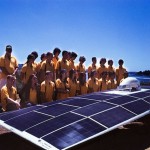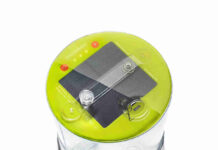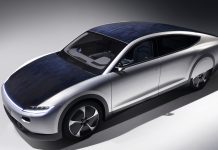 Solar Racing Team, is a multi-disciplinary, student-led, non-profit organization composed by the students at the University of New South Wales. They design and build solar vehicle competitively, and they want to share the completion of Sunswift IVy, the latest and finest adaptation of the solar racecar.
Solar Racing Team, is a multi-disciplinary, student-led, non-profit organization composed by the students at the University of New South Wales. They design and build solar vehicle competitively, and they want to share the completion of Sunswift IVy, the latest and finest adaptation of the solar racecar.
The fundamental premise of their existence as an organisation is underpinned by the need for environmentally conscious designs which they test by competing against other teams all around the world in a world solar race.
Last week, they were trying for a record run in Sunswift IV. With racer Barton Mawer behind the wheel, Sunswift has broken the Guiness World Land-Speed record for a solar car. The record was set at 88km/h by Sunswift IVy on the 7th of January, 2011. The previous record was set by General Motors Sunraycer, which travelled 78km/h on roughly 1500 Watts. During the day that Sunwift IVy set the record, conditions were mostly cloudy. The record breaking run was at 10:30 AM when they got lucky with enough of a break in the clouds. Solar – noon was at 13:06 that day.
The solar car used about 1050 W to travel at the speed it did for the record run. The batteries were removed, so as to compete on the grounds of energy efficiency alone. This means that Sunswift IV, with ~25% less power than the previous record holder, went 13% faster.
They’ve come a long way since 1988.The maximum power they ever saw from the solar array was 1340 W. The clouds never stayed away for long enough to complete any faster runs. “It was a long road but we’re really happy with the result,” said Sunswift project manager Daniel Friedman.
According to Mawer, the solar car was steady on the road, though the handling dynamics changed after the team removed the 55-pound on-board battery that was designed to power the solar car on longer journeys. “The solar car is designed to travel at these speeds, so the aerodynamics meant the car was steady,” Mawer said. “However since we were going for solar energy only, we removed the battery that normally sits in the front which meant the car wanted to move a little from side to side. But I felt safe the whole time and with improvements feel confident the car could handle going faster!”
Go faster is exactly what the team plans to do. Currently, they’re optimizing IVy for the upcoming World Solar Challenge to be held in October. “We also plan to take the solar car on a school tour around Australia to try and generate some excitement amongst children who might consider doing engineering or science when they go to university,” Friedman said.
Not only does the Sunswift team hope to inspire the next generation, but they also aim to inspire their competitors to advance the field of solar automobiles. “We hope it spurs a bit of excitement about designing and building ultra-efficient electric vehicles,” Friedman said. “Our vision is hopefully that a few other teams take on the challenge and try breaking this record again. We might even find some designing cars specifically geared toward breaking this record, and in the process develop even more efficient solar cars.”
Probably that is the most important goal.



